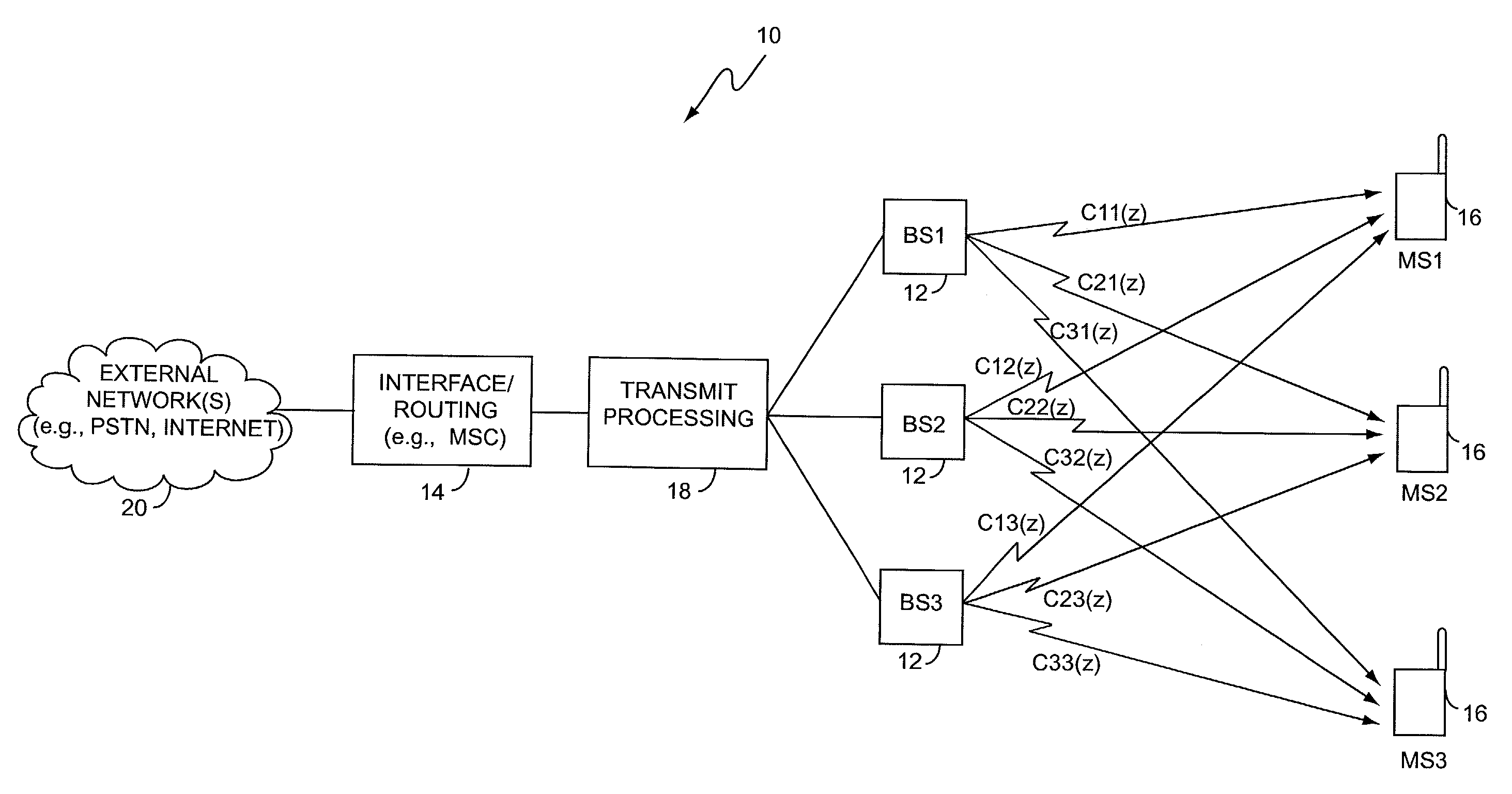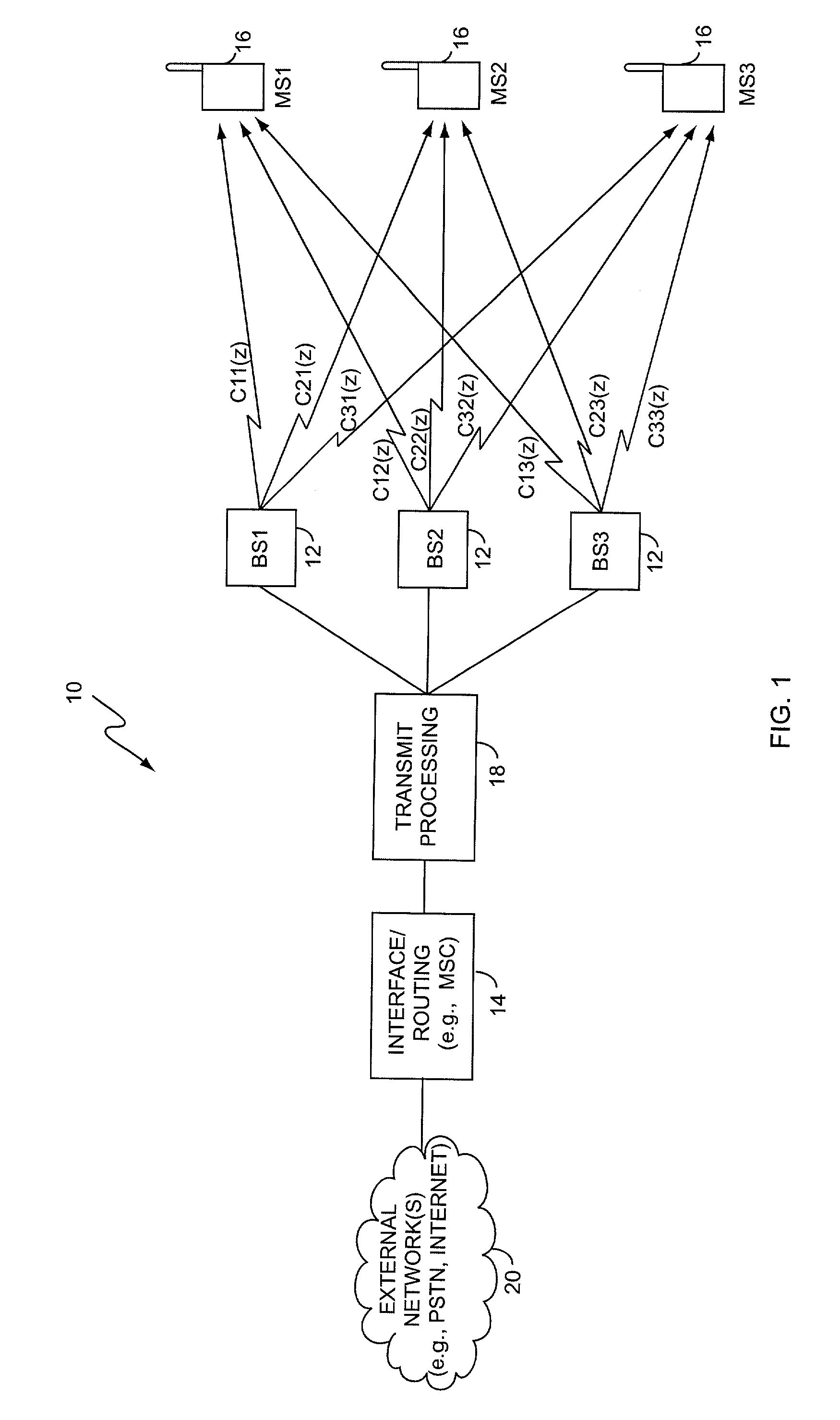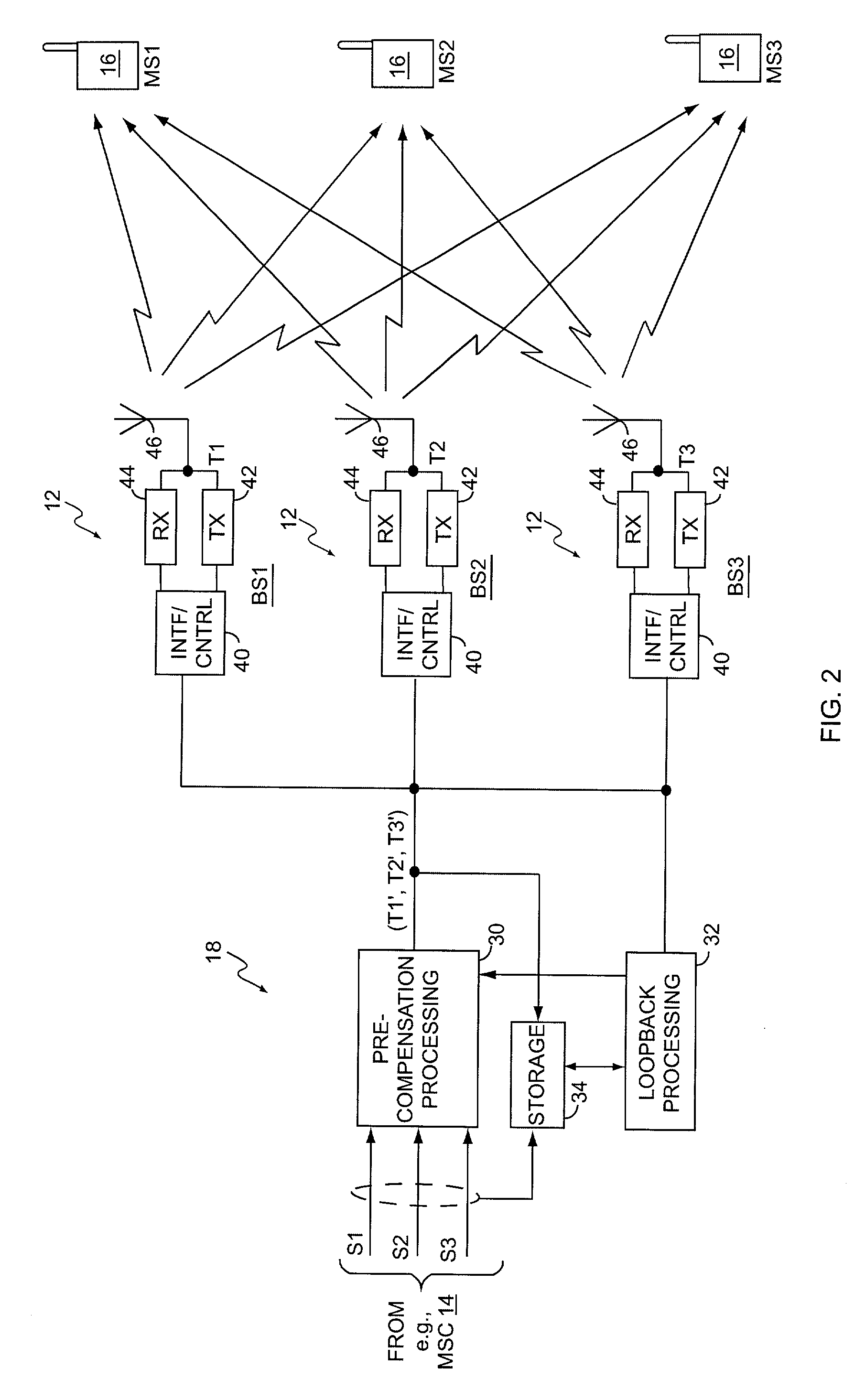Mobile station loop-back signal processing
a mobile station and loopback technology, applied in the field of wireless communication systems, can solve the problems of non-ideal performance of transmitters and receivers, transmission information and received information that cannot be recovered, and receive signals that rarely have perfect correspondence to transmitted signals, so as to improve network transmission efficiency and reduce unwanted signal interference
- Summary
- Abstract
- Description
- Claims
- Application Information
AI Technical Summary
Benefits of technology
Problems solved by technology
Method used
Image
Examples
Embodiment Construction
[0042]The present invention is directly applicable to a wide variety of wireless communication network types, such as those based on TDMA schemes, and those based on CDMA schemes. Exemplary standards to which the present invention applies include, but are not limited to, the TIA / EIA / IS-136, TIA / EIA / IS-95, and TIA / EIA / IS-2000 (cdma2000) published by the Telecommunications Industry (TIA) Association and the Electronics Industry Association (EIA), and Wideband CDMA (WCDMA). Those skilled in the art will further recognize the present invention's applicability to variants of one or more of these standards, such as the IS-856 High Data Rate (HDR) variant associated with IS-2000, and the somewhat similar high-data variants of WCDMA. Of course, the direct applicability of the present invention carries forward from these standards into the evolving fourth-generation wireless standards, and beyond. In light of this broad applicability, the following discussion includes sections that pertain t...
PUM
 Login to View More
Login to View More Abstract
Description
Claims
Application Information
 Login to View More
Login to View More - R&D
- Intellectual Property
- Life Sciences
- Materials
- Tech Scout
- Unparalleled Data Quality
- Higher Quality Content
- 60% Fewer Hallucinations
Browse by: Latest US Patents, China's latest patents, Technical Efficacy Thesaurus, Application Domain, Technology Topic, Popular Technical Reports.
© 2025 PatSnap. All rights reserved.Legal|Privacy policy|Modern Slavery Act Transparency Statement|Sitemap|About US| Contact US: help@patsnap.com



